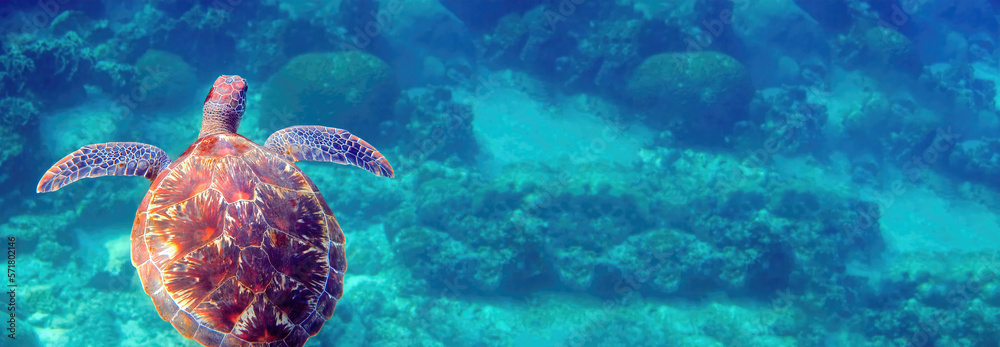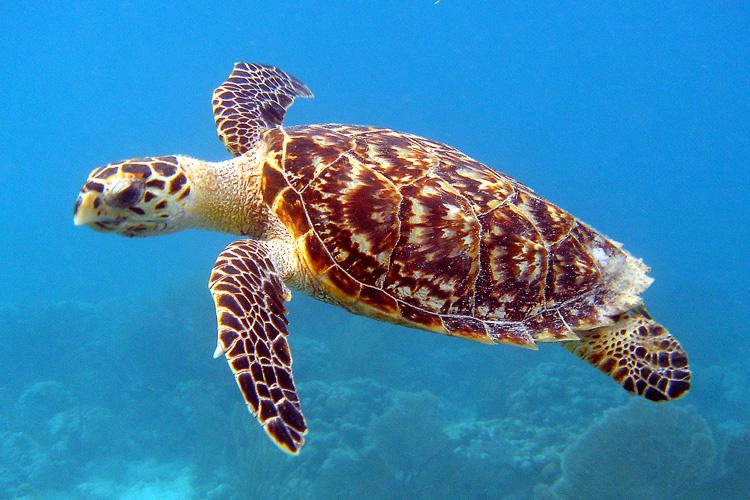
Turtles
Turtles are reptiles of the order Testudines, characterized by a special shell developed mainly from their ribs. Modern turtles are divided into two major groups, the Pleurodira (side necked turtles) and Cryptodira (hidden necked turtles), which differ in the way the head retracts. There are 360 living and recently extinct species of turtles, including land-dwelling tortoises and freshwater terrapins. They are found on most continents, some islands and, in the case of sea turtles, much of the ocean. Like other amniotes (reptiles, birds, and mammals) they breathe air and do not lay eggs underwater, although many species live in or around water.
The largest living species of turtle (and fourth-largest reptile) is the leatherback turtle, which can reach over 2.7 m (8 ft 10 in) in length and weigh over 500 kg (1,100 lb). The largest known turtle was Archelon isochrons, a Late Cretaceous Sea turtle up to 4.5 m (15 ft) long, 5.25 m (17 ft) wide between the tips of the front flippers, and estimated to have weighed over 2,200 kg (4,900 lb). The smallest living turtle is Chaeropus signets of South Africa, measuring no more than 10 cm (3.9 in) in length and weighing 172 g (6.1 oz).
Turtles make use of vision to find food and mates, avoid predators, and orient themselves. The retina's light-sensitive cells include both rods for vision in low light, and cones with three different photopigments for bright light, where they have full-color vision. There is possibly a fourth type of cone that detects ultraviolet, as hatchling sea turtles respond experimentally to ultraviolet light, but it is unknown if they can distinguish this from longer wavelengths. A freshwater turtle, the red-eared slider, has an exceptional seven types of cone cell.
Most turtle species are opportunistic omnivores; land-dwelling species are more herbivorous and aquatic ones more carnivorous. Generally lacking speed and agility, most turtles feed either on plant material or on animals with limited movements like mollusks, worms, and insect larvae. Some species, such as the African helmeted turtle and snapping turtles, eat fish, amphibians, reptiles (including other turtles), birds, and mammals. They may take them by ambush but also scavenge. The alligator snapping turtle has a worm-like appendage on its tongue that it uses to lure fish into its mouth. Tortoises are the most herbivorous group, consuming grasses, leaves, and fruits. Many turtle species, including tortoises, supplement their diet with eggshells, animal bones, hair, and droppings for extra nutrients.

